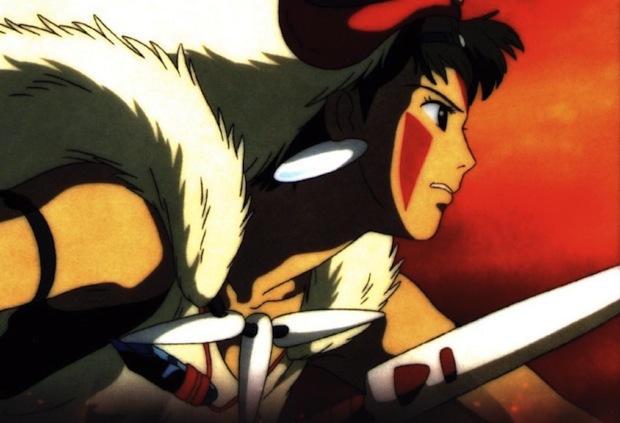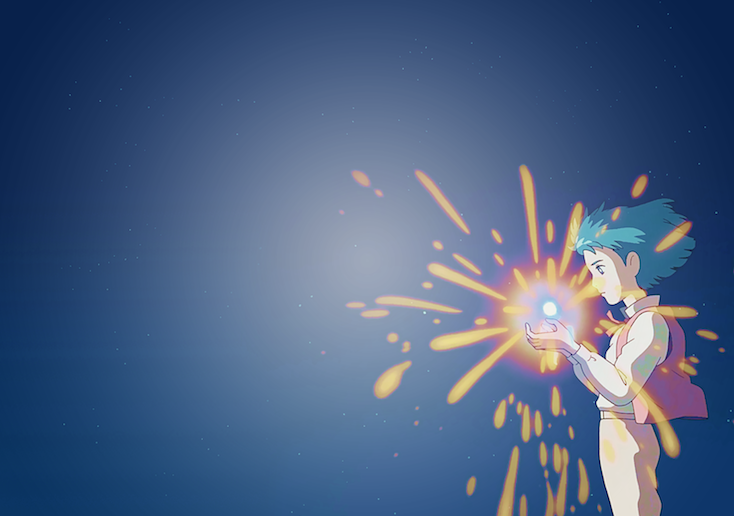Sad days have come upon fans of Hayao Miyazaki. In case you haven’t heard, Miyazaki announced his retirement from the world of animation on Sunday at the Venice Film Festival. At 72 years and after all the wonderful films he has bestowed upon us, it’s hard to argue with the man’s decision. Still it’s upsetting news to process for a legion of fans who have come to hold his films near and dear to their hearts. It’s bittersweet, but if we can’t keep him forever, then we might as well give him the best send off possible.
Hayao Miyazaki started his career like everybody else, from the bottom up. However, from his early work for anime television shows, Miyazaki’s talent, skills, and ideas were quickly recognized. Miyazaki had already directed several tv episodes when he directed his first feature film. The movie was Lupin the Third: The Castle of Cagliostro and was released 34 years ago in 1979. It was a movie adaptation of a tv series of the same name for which he had also directed episodes. Lupin the Third is far from the definitive Hayao Miyazaki film. In fact, the movie’s story and look are different from his more famous works. But by no means is this film short of enchanting. With it’s synthesizer soundtrack and action sequences alone, the movie is a fun ride. The main character, Lupin is a witty thief who gets caught up in the mysterious dealings of a Count and his damsel-in-distress-wife-to-be Clarissa. It’s a must see for Hayao Miyazaki completists.
His next film came five years later and was called Nausicaä of the Valley of the Wind. The film tells the story of adventurous Princess Nausicaä who strives to save her planet from from two warring countries. Many of Miyazaki’s director trademarks would appear in Nausicaä. It features a strong, female protagonist and his iconic flight sequences. It’s a beautiful film with an environmental message that seems all too appropriate nowadays. With this film, Miyazaki impressively and confidently asserted his voice and point of view as an up-and-coming director, writer, and storyteller.

In 1986, just two years after releasing Nausicaä, Miyazaki put out yet another impressive film with Castle in the Sky. Sheeta, a descendant of an ancient people, and orphan Pazu must fight to save the last of the floating castles from falling into the hands of Colonel Muska who would use the technology for evil purposes. The story is nothing short of magical, but the best part for me is the visuals. The richness of the animation, and the splendour of the castle, Laputa, when it is first revealed is breathtaking. Additionally, minor characters round out the film with whimsical and heartwarming storylines. The technical feats achieved in this film are precisely why Miyazaki is regarded as such a masterful animator.
With his next film, Miyazaki proved that while he could tell exciting, action-packed stories, he was just as capable of porting quieter, more grown up storylines into kid-friendly animated films. My Neighbor Totoro, is the story of two young girls who have recently moved into a new home with their father while their mother is battling health issues at a hospital. It is partly the story of children trying to cope with a difficult time in their young lives, but it is also about the joys of childhood imagination and their capacity to see the beauty and wonder in the simplest of things.
Miyazaki’s next two films, Kiki’s Delivery Service and Porco Rosso, are perhaps slightly less acknowledged if only because of the caliber of Miyazaki’s work before and after these films. Nevertheless, these are two films that once again prove what an adept storyteller Miyazaki can be. Kiki’s Delivery Service is a coming of age film about a young witch, while Porco Rosso is a redemption story about an ex-WWI pilot who is cursed and therefore has the face of a pig. If I didn’t make it clear earlier, Miyazaki has a hand in writing the story or screenplay of all his films, which makes his versatility and consistency all the more astonishing. Hayao Miyazaki is revered not just because he can direct and animate, but because he can craft stories very few people can.
Up until this point, Miyazaki had been a success in Japan, but he was still largely unheard of by Western movie goers. This would all change, and soon Miyazaki would gain the critical accolades that had already made him a notable figure in Japan. Princess Mononoke was released in 1997 and tells the story about a girl, San, (who is raised by wolves) and Ashitaka, a young tribal prince who is forced to leave his home when a demon infects him with a plague that will eventually kill him. Soon, Ashitaka and San are pulled into a battle between the forest spirit and Iron Town, whose activities are destroying the forest. The story is decidedly darker and more mature, with graphic violence and complex character motivations. There are no explicit villains, just people and beings trying to make the best choices available to them. With this film, Miyazaki became the director of the highest grossing film in Japan, and received a Japanese Academy Award. A few years later, the film was released in the United States by Miramax, and the world of animation’s best kept secret was out.
Hayao Miyazaki capitalized on the success of Princess Mononoke, by releasing perhaps his most famous film to date, Spirited Away in 2001. In it, Chihiro becomes trapped in a spirit realm and must fight to save her parents who have been turned into pigs. The film was the first anime film to win an Oscar. It once again smashed box office records in Japan and won him another Japanese Academy Award. If you haven’t seen this film, do so before your Miyazaki Fan Club card is revoked!

2004 brought along Miyazaki’s adaptation of Diana Wynn Jone’s novel of the same name, Howl’s Moving Castle. To underscore Miyazaki’s reach, by now this was his third film to receive a theatrical release in the United States and the second Oscar nomination. The english dub features notable Hollywood actors such as Christian Bale and Lauren Bacall. Miyazaki had not only broken into the market, but had also gained its respect and admiration. This film also brought a stark realization. Miyazaki announced that it would be his last film. Luckily he changed his mind. Nevertheless, it was a reminder of how precious he was and continues to be to animated film.
Miyazaki returned to all hand-drawn animation with his penultimate film, Ponyo, a modern, retelling of The Little Mermaid. The movie grossed over $15 million in the US, his highest US release to date, and over $200 million worldwide. The scope of the film and the technical levels are in the upper echelons of my list of favorite animated films.
Looking back at Miyazaki’s canon of films, I’m flooded with gratitude for this man that has meant so much to me through his drawings and stories. It’s no wonder that he is a Japanese national treasure. He may be retiring, but he has left us a legacy that will always be available to us. With his latest film, The Wind Rises, Hayao Miyazaki has returned to one of his favorite topics: flight. The movie is about Japanese WWII fighter plane designer Jiro Horikoshi. It premiered at the Venice Film Festival, and reports say that audiences stateside might have to wait a while for a theatrical release. But it’s ok; it will be worth it. I haven’t read the reviews yet for this film, nor do I intend to do so. Even when I know what to expect from a Miyazaki film, he always finds new ways of surprising and entertaining me. I can’t wait to let my imagination fly one more time with the wonderful Hayao Miyazaki.